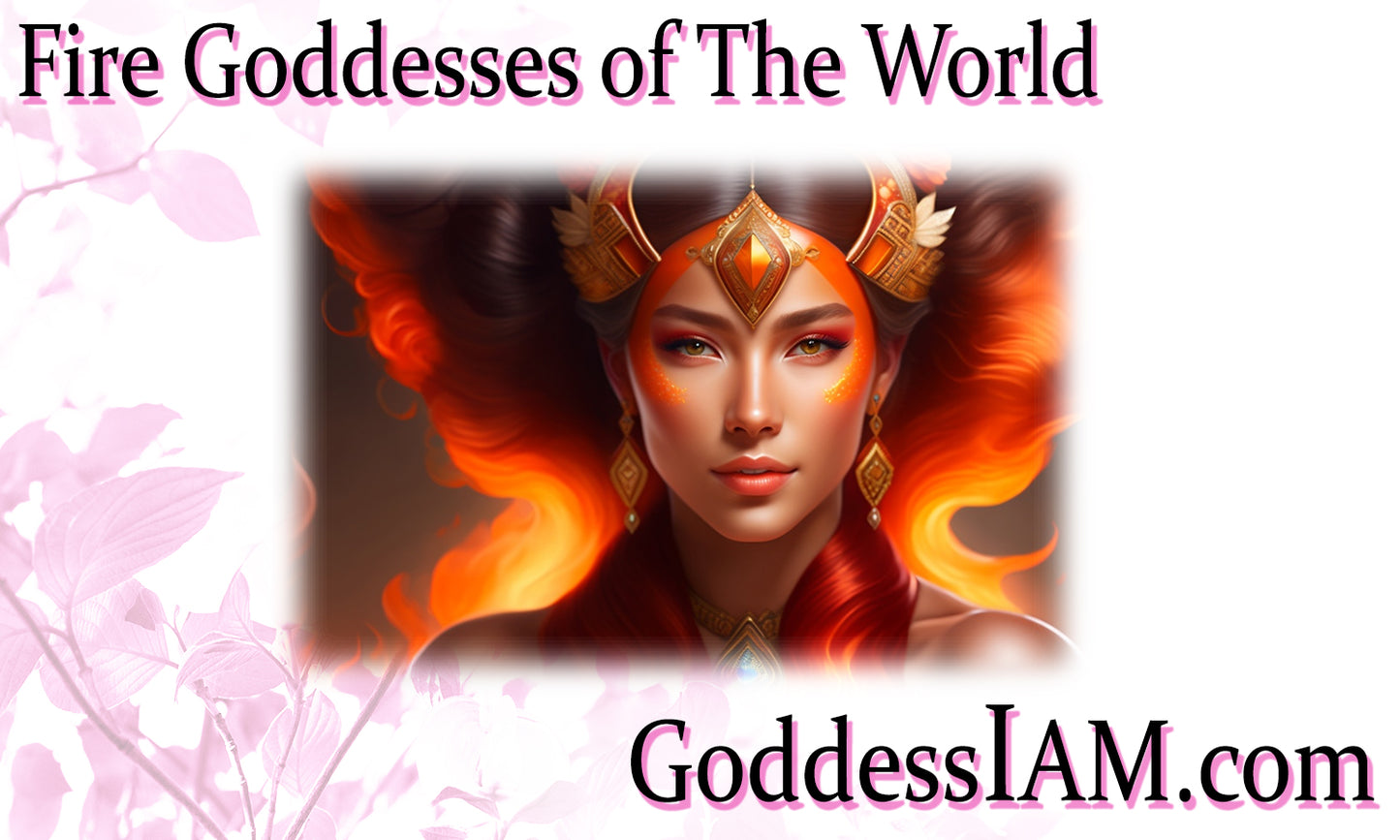
Throughout history and across diverse cultures, goddesses of fire have been revered as symbols of transformation, illumination, and the raw power of creation. These fiery deities have left their indelible mark on human consciousness, imparting lessons that span from the physical properties of fire to its metaphorical significance in the realms of passion, inspiration, and rebirth.
One such goddess is Brigid, hailing from Celtic traditions. She is the embodiment of the fire of inspiration, the forge's heat, and the hearth's warmth. Brigid's teachings emphasize the sacredness of fire as a source of both literal and metaphorical light. As the goddess of poetry and creativity, Brigid encourages individuals to stoke the flames of their imagination, to shape their thoughts and passions into creations that inspire and uplift. In ancient times, her devotees would light fires in her honor on the festival day of Imbolc, symbolizing the return of life and light to the world.
Moving to the Mediterranean, the goddess Hestia in Greek mythology represents the hearth and home fire. Her teachings center around the importance of family and community, with the hearth fire as the heart of the home. Hestia's sacred flame was never allowed to extinguish, symbolizing the continuity of a household and its unity. Her gentle yet vital presence serves as a reminder that amidst chaos, returning to the hearth offers solace, stability, and a safe haven.
Venturing to the Indian subcontinent, Agni is a Vedic deity embodying fire in both its destructive and transformative aspects. Agni's mythologies convey fire's dual nature – it can consume, but also purify and renew. His teachings speak of the necessity of undergoing trials by fire to emerge stronger, much like precious metal is refined through intense heat. Agni's flames are also symbolic of divine knowledge and wisdom, urging humanity to embrace self-awareness and inner transformation.
In Japanese culture, the goddess Ho-Musubi symbolizes the creative force of fire. She is the deity of life and procreation, with her flames representing the primal energy that brings forth new life. Ho-Musubi's teachings encourage individuals to connect with their inner creative spark, to nurture their passions and endeavors, and to embrace the life-giving aspect of fire as a catalyst for growth and evolution.
From the ancient Americas, we find the Mayan goddess Ix Chel, often associated with the moon but also with fire. Her teachings emphasize the cyclic nature of existence and the transformative power of fire, mirroring the cycles of the moon's phases. Ix Chel's myths depict her as a weaver of life's threads, implying that the fiery force of creation is intricately woven into the fabric of the universe. Her followers looked to her for guidance in embracing life's changes and harnessing the potential of renewal that fire represents.
These goddesses of fire, spanning cultures and eras, offer us a rich tapestry of teachings. They inspire us to harness fire's energy for both physical and spiritual growth, to find balance between its destructive and creative aspects, and to recognize the flames of passion, inspiration, and transformation burning within ourselves. From the hearth to the forge, from the sun to the moon, the teachings of these fiery goddesses continue to illuminate the path of human understanding and evolution.
